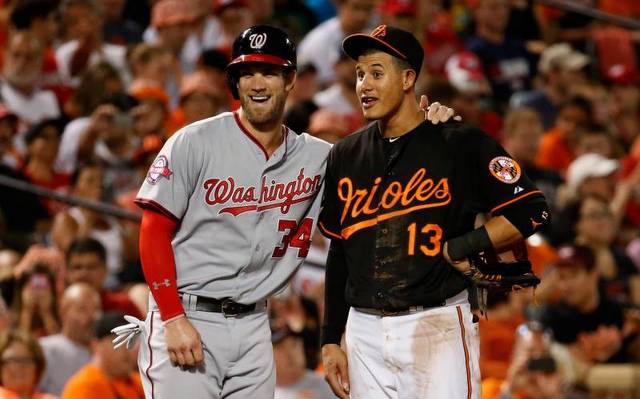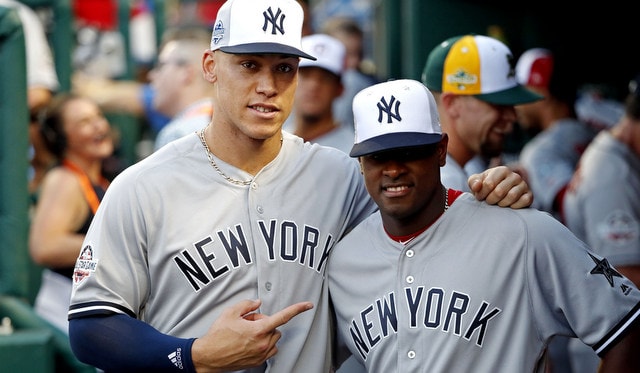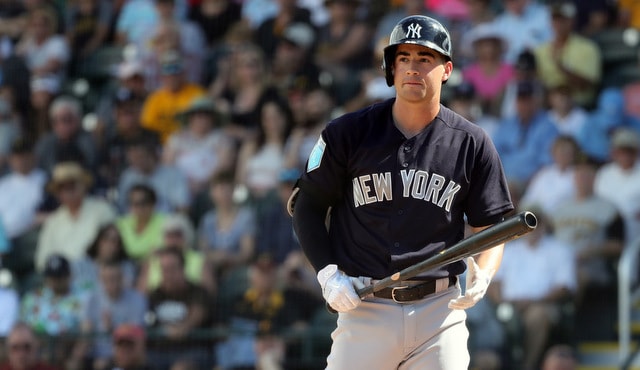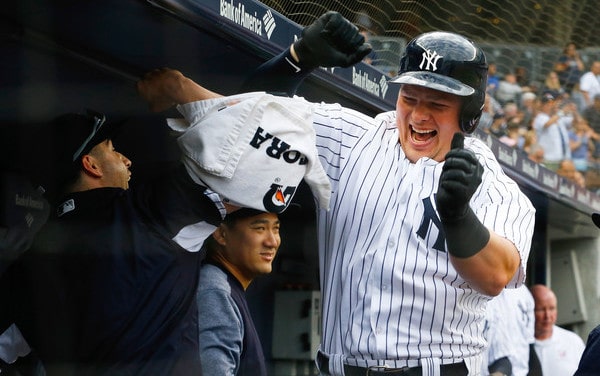
I’m at 92%. You might be a bit above or a bit below that, depending on how you feel about how the team is constructed. No matter where you are, the important thing is to arrive at a number. Look around the league. What would have to go wrong for the Yankees and right for everyone else for them to miss the postseason? It doesn’t seem too likely.
Would signing Bryce Harper or Manny Machado much improve your confidence of the Yankees making the postseason? Probably not, since it’s high already. I go from 92% to 98% — it would take a whole ton going wrong in the Bronx combined with enough going right in Anaheim, Tampa, or Minnesota to topple the Yankees in this scenario.
Making the playoffs 98 times out of 100 rather than 92 on the surface suggests that signing Harper or Machado might not be the best use of resources. Why take on that level of risk for only a marginal improvement in your chances?
The goal, of course, isn’t simply to make the playoffs. Let’s extend this exercise.
How confident are you that the Yankees will win the AL East? This has value, as we witnessed the last two years in the Wild Card game. It absolutely affects the confidence you’d have in the Yankees progressing to the ALDS, which de facto affects your confidence in them making or winning the World Series.
Right now I’m at 55%. The Red Sox have some holes and probably won’t be as good as they were last year. Maybe 55% is a bit high, maybe it should be 52%, with the Red Sox at 45% and the Rays at 3%. But I’m sticking with 55% for the moment. If they signed Harper or Machado, however, I’d be at 67%. This can make a big difference going forward.
Technical mumbo jumbo
Without walking through all the steps, once I account for my confidence both of them winning the division and making the playoffs I can run them through similar exercises for the playoffs. Quickly: if I have them winning the division 55 times that means I have them winning the Wild Card 37 times. If I’m 65% confident of them winning the WC game (perhaps too confident here), then they win 24 times. That’s 79 times in the ALDS, and at a 60% confidence of winning that they make the ALCS 47 times, and even at 55% confidence they win that they make the World Series just 26 times, and so win 13 times.
After running each scenario through my various confidences in them winning at each stage, this is where I arrive:
| Confidence | ||
| Without H/M | With H/M | |
| Make postseason | 92% | 98% |
| Win AL East | 55% | 67% |
| Win AL Pennant | 26% | 29% |
| Win World Series | 13% | 15% |
Is shelling out a long-term $300 million contract worth a two-percentage-point increase in their chances of winning the World Series?
Hell yes.
For starters, it’s not just two percentage points this year. Signing one of these free agents will add to the team’s confidence in winning the World Series for years to come. That is, every year for the next — say five, at least — you’ll have more confidence that the Yankees will win the World Series than you would if they don’t sign one of them.
Second, percentage points don’t tell the whole story here. By nature your confidence in any one team winning the World Series won’t be that high. The field is too large and baseball too unpredictable. Increasing a low number by two percentage points, though, can be significant in terms of relative increase. For instance, signing Harper or Machado increases my confidence that they’ll make the postseason by six percentage points, which in this case amounts to 6.5%. Going from 13% to 15% confidence they win the World Series is a 15% increase. That’s pretty significant.
Incidentally, using Cot’s payroll projection of $211,742,500, signing Harper or Machado would likely represent a 15% increase in payroll.
A 15% increase in payroll for a 15% increase in confidence they’ll win the World Series? Seems equitable to me.



